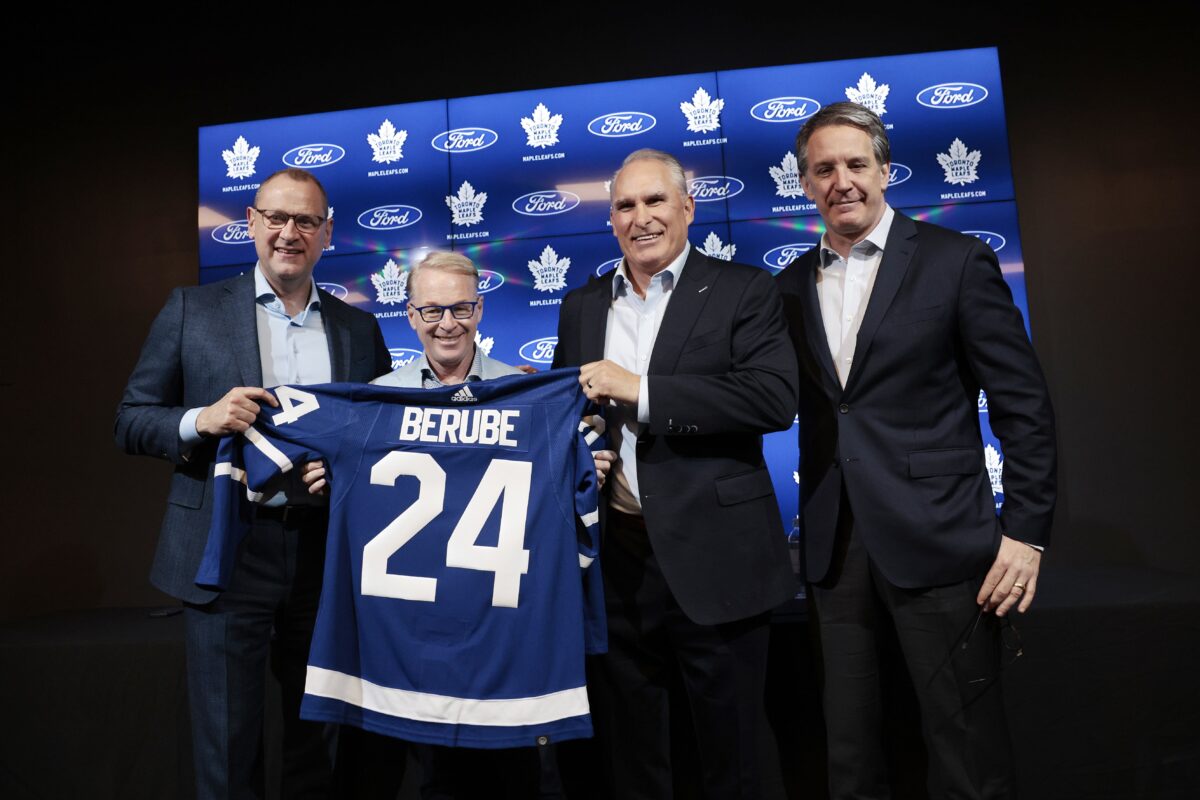As the 2024-25 season approaches, the Toronto Maple Leafs find themselves in a familiar, frustrating place: another offseason filled with lofty promises and doubts about whether real change will come. After seven first-round playoff exits in eight seasons, the message from fans and pundits was clear—something had to give.
Related: Maple Leafs News & Rumors: Knies, Domi, Nylander, Holmberg & Cowan
Yet, despite expectations of a franchise-altering move, particularly surrounding Mitch Marner‘s future, the Maple Leafs once again chose a path of continuity rather than upheaval. So, what was supposed to happen, what happened, and what came next?
What Was Supposed to Happen: The Impetus for Change
Following their latest playoff disappointment, many believed the time had come for the Maple Leafs to shake up their core. Like Marner, the idea of trading a big name became a central narrative. The team, it seemed, could no longer justify sticking with the same group of stars that had consistently failed to deliver when it mattered most. Fans demanded a more “scorched earth” approach. For most supporters, that meant tearing down the current roster, making bold moves, and starting fresh.
With the pressure mounting, it was thought that the 2024 offseason would be when everything changed—not just minor roster tweaks but a fundamental shift in the team’s core identity. There were swirling rumors of trades, big free-agent signings, and a new leadership direction that would take the Maple Leafs out of their prolonged playoff funk. At least the organization’s leadership group promised as much. Everything was supposed to be on the table.
What Really Happened: More Changes Around the Core
Instead of radical changes to the “core four” (Auston Matthews, Marner, William Nylander, and John Tavares), the Maple Leafs retooled the supporting cast again. Sheldon Keefe was replaced as head coach by Craig Berube, who brings a Stanley Cup pedigree from his time with the St. Louis Blues. While Berube’s hiring signaled a fresh approach behind the bench, it didn’t alter the essential makeup of the team’s forward group.
Related: Maple Leafs’ Way-Too-Early 2025 Forward Trade Targets
Defensively, there have been modest changes. Free agent Chris Tanev joins a moderately-revamped blue line, which should bring much-needed stability and defensive acumen. But the forward group—often criticized for lacking grit and playoff resilience—remains essentially the same. Even the captaincy transition, with Matthews taking over the “C” from Tavares, feels more like a cosmetic change than the transformational move many hoped for.
The most significant offseason development came in the executive suite, with Keith Pelley’s appointment as the new CEO of Maple Leaf Sports & Entertainment (MLSE). In his first public appearance, Pelley spoke forcefully about the need for higher standards, saying “Good is simply not good enough.” He promised a more aggressive pursuit of championships, a bold stance that echoed what fans have long demanded.

(R.J. Johnston/Toronto Star via Getty Images)
Pelley had the reputation of being a firebrand. He was supposed to be passionate, energetic, and spark change. He was controversial. Indeed, he would strongly impact the organization by challenging the status quo. However, the “core four” remain intact as the Maple Leafs enter the new season. That should raise questions about whether bold actions match the words laid out after Keefe was fired. Even with Pelley, little seems to have changed.
Will Real Change Ever Finally Come?
As the 2024-25 season gets underway, the question remains: Is this the “last dance” for the Maple Leafs’ core? There’s a growing sense that the team is heading into a make-or-break season. If this group fails to deliver again, avoiding more drastic changes might be impossible. But what happens if they don’t steer the float to its final destination – a Stanley Cup parade?
Related: NHL Rumors: Bruins, Canadiens, Oilers
Should fans worry this is another “smoke and mirrors” season where superficial changes mask a more profound unwillingness to part with beloved but underperforming stars? They’ve seen this story play out before, not just in hockey but in other sports. Sometimes, teams hold onto their stars too long, hoping for a breakthrough that never comes.
Consider the example of the Vancouver Canucks’ “Sedinery” era. Despite years of regular-season success and a trip to the Stanley Cup Final in 2011, the team’s core—Henrik and Daniel Sedin—was never broken up, even as it became clear that a rebuild was inevitable. The Canucks eventually drifted into years of mediocrity before the inevitable overhaul came, but by then, it was too late to compete for a title.
Could the Maple Leafs be heading down a similar path? If this core fails to break through again, will the organization finally make the hard decisions required to reshape the team?
What Comes Next for the Maple Leafs?
The Maple Leafs find themselves at a crossroads as the new season begins. The talent is there, but the results haven’t followed. With Pelley in charge and Berube behind the bench, the pressure is higher than ever. Fans have heard promises of change, but this season might be the real test. But, then, we’ve heard all this before – haven’t we?
Related: Maple Leafs Management Sending Mixed Messages to Fans
Will the Maple Leafs sink or swim with this core? Or will the team’s Stanley Cup dreams finally collide with the iceberg looming in the distance? Change is either coming—through victory or failure—or the team will face the consequences of standing still.
